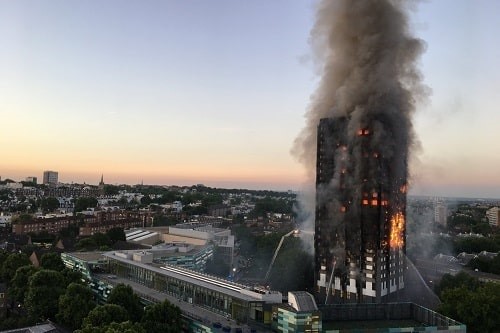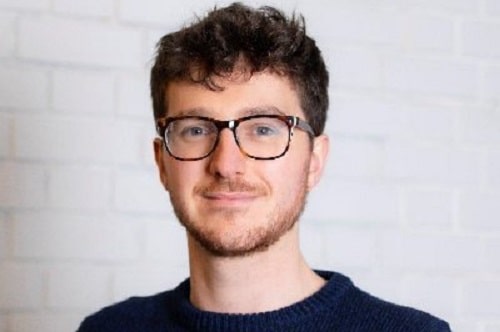It is now almost two years since the tragic Grenfell tower fire and so an appropriate moment to reflect on the progress —or lack—on implementing subsequent measures to ensure that occupants of high-rise buildings not only feel safe but actually are safe within their homes.
Opinion
Post Grenfell where are the changes?
The government commissioned independent review of building regulations and fire safety management, led by Dame Judith Hackitt, provided in May 2018, wide ranging recommendations, and an ultimately damning conclusion: that the current system for ensuring fire safety within high-rise buildings was not fit for purpose. The report further added that the public, and in particular residents of such premises, had lost all confidence in the regime.
Although the response from government and related regulatory bodies was positive in accepting the report findings, and an implementation plan published in December 2018 indicated a fundamental reform of the building safety regulatory reform system, it is somewhat disconcerting that the enduring legacy of the fire that destroyed so many lives continues to be a state of insecurity for those directly and indirectly affected.
 It was perhaps indicative of a wider social inequality that the tragic events at Grenfell occurred in one of the country’s richest borough’s
It was perhaps indicative of a wider social inequality that the tragic events at Grenfell occurred in one of the country’s richest borough’s
It was perhaps indicative of a wider social inequality that the tragic events at Grenfell occurred in one of the country’s richest borough’s, where private investment in new luxury housing stood out in marked contrast to funding cuts from building refurbishment budgets.
Following Grenfell, over 400 high-rise buildings were identified as having unsafe aluminium composite material (ACM) external cladding similar to that which failed with catastrophic effect at Grenfell Tower. The government made available some £200m for the replacement of this unsafe ACM cladding on high-rise residential homes in the social and private sectors and interim measures for ensuring safety were implemented by local authorities and the fire and rescue authorities.
More recently, this month in fact, the secretary of state for housing, communities and local government announced a further consultation entitled Building a safer future: proposals for reform of the building safety regulatory system. While these plans include laudable generic proposals to introduce a comprehensive dutyholder regime, including clear accountabilities for ownership of risk, improved communication and consultation with residents and a new building regulator, it is to be hoped that the necessary funding together with realistic and expedient timescales for implementation do not become barriers to progress.
It is essential to take a holistic approach to ensuring a catastrophic event such as Grenfell never happens again. There must be cross-learning and knowledge sharing to ensure all dutyholders are fully aware and proactive in their responsibilities, while working with residents and building occupiers.
Everyone has a fundamental right to be safe and feel safe within their home and it is absolutely correct that residents should be at the very heart of the process that provides this assurance. The issue of resident safety requires a culture change in order to ensure stakeholders have an effective and participative role in building safety management.
The Grenfell tragedy was a man-made event attributable to a series of decisions that were made involving a wide body of individuals embedded within the administrative architecture that frame our lives and, which seem to imply some groups as being more worthy to be listened to than others.
Surely, as a fundamental principle of sound risk management, the people who are at the sharp end of a risk must have an input into determining how significant a risk actually is and how much effort should go into its prevention and control?
Even allowing for the tardiness of statute and government process, two years on from the catastrophic events of Grenfell, the lack of tangible change to the underlying root causes and systemic failures is quite frankly lamentable.
David Parr is director of policy and technical services at British Safety Council
OPINION

Alcohol – the negative impact on work and workplaces
By Dr Jamie O’Halloran, IPPR on 02 January 2026
New IPPR research shows that most employees expect their employer to play an active role in reducing alcohol harm. Senior staff, in particular, believe employers have an even greater responsibility. Yet in practice, many employees say they do not see their employer taking meaningful steps to minimise harm.

Beyond 2025: The journey towards a safer world
By Mike Robinson FCA, British Safety Council on 22 December 2025
As 2025 draws to a close, we reflect on a year of success and safety. It also allows us to look forward to the coming year, recognising that with each new year comes the unbridled hope and opportunity to create the safest year in human history for the workers of the world.

How to create a neuroinclusive workplace
By John Robinson, Schofield Sweeney on 09 December 2025
The modern workplace is a diverse environment. Most workforces will be made up of individuals representing the majority of the groups protected under the Equality Act 2010.



